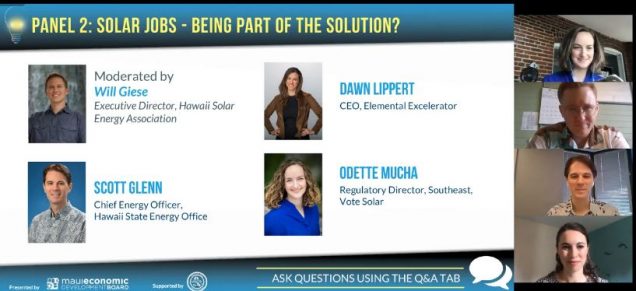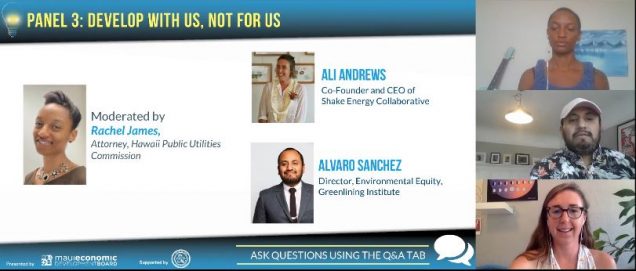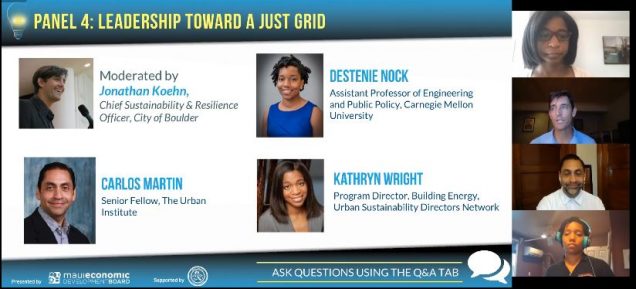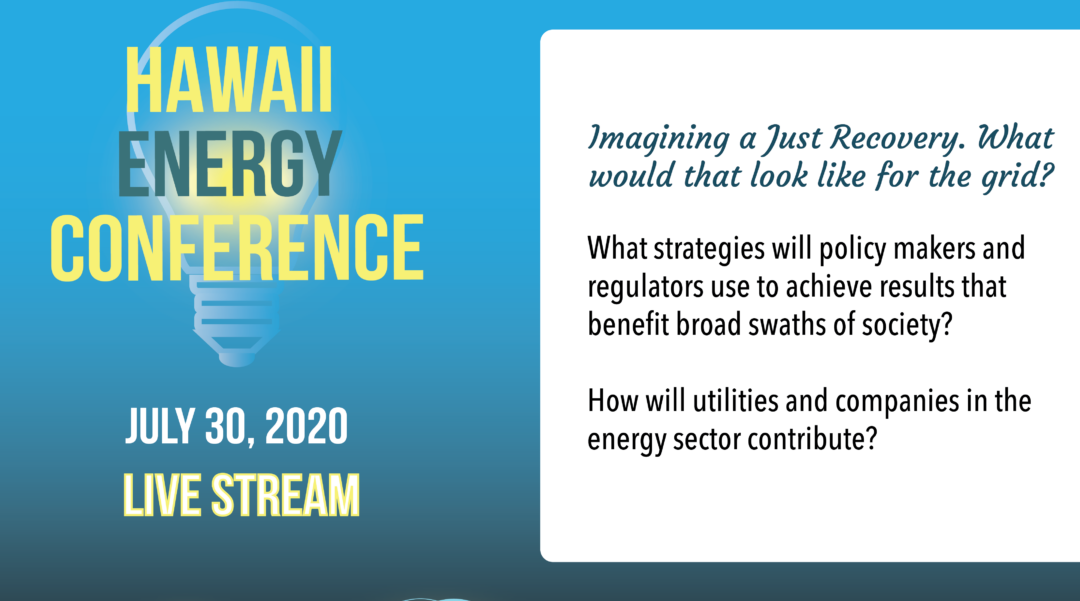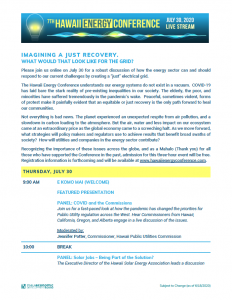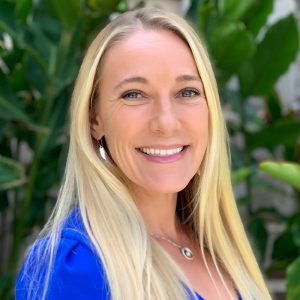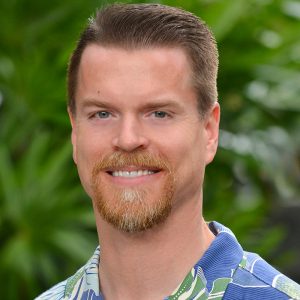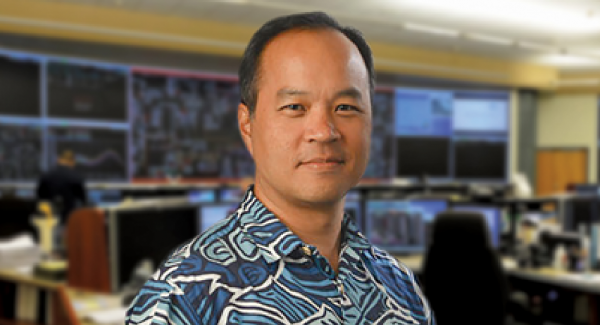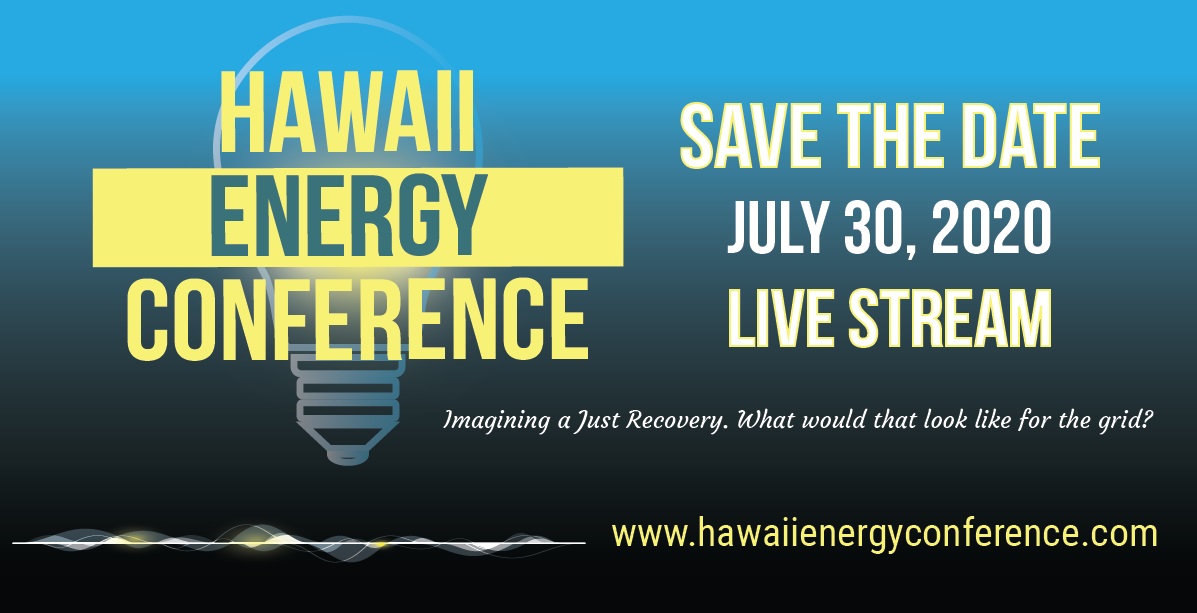
Highlights of the 2021 Hawaii Energy Conference
The 8th annual Hawaii Energy Conference (HEC) welcomed over 370 participants as it explored the theme Energy Transition in Hawaii: Focus on Investments in People and Projects. Presented by Maui Economic Development Board (MEDB) and supported by the County of Maui Office of Economic Development, the online two-day conference June 22 and 24 featured keynotes, panel discussions, interviews, networking, and exhibits.
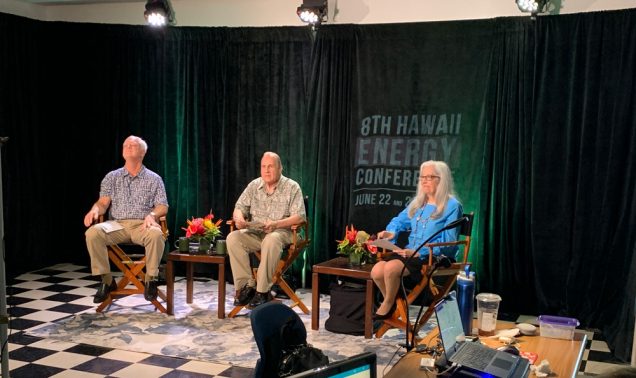
Doug McLeod, Frank De Rego, Jr and Leslie Wilkins, get ready to welcome attendees to the 8th Hawaii Energy Conference
With in-person gatherings still limited due to Covid-19, the virtual presentation allowed the energy industry leaders from Hawaii, the continental U.S. and beyond to continue to exchange ideas on how to serve the community better in today’s rapidly changing power generation and delivery environment.
Leslie Wilkins, MEDB President and CEO, reflected, “As we explored our theme, the word ‘investment’ was used in its broadest sense. Besides financial capital, it includes our cultural, social, and human capital. We all know that every community in the U.S. and throughout the world must invest in and draw upon the knowledge, understanding, and skills of the people to develop a clean, secure, resilient, and sustainable energy future.”
The conference began by reflecting on the HEC’s special focus of our responsibilities to the life of the land and its people with a pule (blessing) by Clifford Nae’ole, cultural advisor to The Ritz Carlton in Kapalua. Wilkins commented, “Clifford said it elegantly: ‘Look to the future, respect each other, listen, understand, decide. The future is ours. We are all connected by a single source of energy.’”
“In Hawaii we are approaching the renewable energy ‘tipping point’ where most of the daytime energy on the grid comes from renewable energy. 2021 promises to be another year of big change in the energy sector, both in Hawaii and the rest of the nation,” said Doug McLeod, Chairman of the HEC Program Committee. “Our opening keynote speaker, Suleman Kahn from Swell Energy, talked about Virtual Power Plants (VPPs). VPPs are an interesting concept because it is a vision that is so much broader than where we started on batteries.”
Day two kicked off with invited speaker Mark Toney, Executive Director, TURN (The Utility Reform Network) with an engaging presentation on Stop Overpaying For Solar and Other Pathways to Affordable Bills. As Executive Director of TURN, Toney sets the organization’s strategic course and directs TURN’s legal and political advocacy on behalf of over 37 million Californians.
In addition to the panel discussions there were interviews of Jennifer Potter, Hawaii Public Utilities Commissioner, on the subject of Performance Based Regulation (PBR); Leilani Chow, Project Manager for Molokai Clean Energy Hui; Henry Curtis, Executive Director and Vice President of Life of the Land; Bob King, President and Founder of Pacific Biodiesel Technologies, LLC; and Dawn Lippert, Elemental Excelerator CEO.
Fifteen minute spotlight talks featured Ulupono Initiative on Investing in EVs, and a discussion on Hydrogen with Chuck Collins, Board Member, Hawaii Hydrogen Alliance and Michelle Detwiler, Executive Director, Renewable Hydrogen Alliance.
Participants were able to view all the presentations live as well as connect and network with each other and sponsors through the virtual platform. Participating sponsors and exhibitors were: Hawaiian Electric; Hawaii Natural Energy Institute; Ulupono Initiative; Elemental Excelerator; Kauai Island Utility Cooperative; Progression Hawaii Offshore Wind; Swell Energy; Burns & McDonnell; and Generac Power Systems.
“The 2021 HEC participants recognized cultural knowledge and community participation as key to implementing new energy projects,” concluded Frank De Rego, Jr., MEDB Director of Business Development, Vice Chairman of the HEC Program Committee, and President of the Maui Native Hawaiian Chamber of Commerce “The attendees all benefited from the cultural ‘ike (knowledge) shared.”
Continue reading for highlights from all the presentations.
DAY 1 | JUNE 22
Keynote: Suleman Kahn, Swell Energy
Creating Transformative and Inclusive Opportunities with VPPs
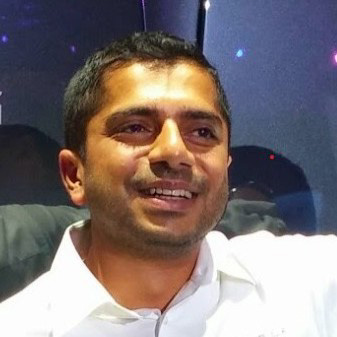
Suleman Kahn, CEO of Swell Energy gave the keynote at the 2021 Hawaii Energy Conference
In January, the Public Utilities Commission ( PUC) approved a $25 million contract for Swell Energy, a California-based energy and grid services provider, to partner with Hawaiian Electric for the delivery of various grid services. Swell Energy will be the administrator and operator of a VPP for the islands.
Kahn said, “At Swell Energy we establish ways to further integrate distributed energy resources into various grid networks in a manner that aligns the interest of consumers, utilities, regulators, and financiers. A VPP is an aggregated network of distributed solar and energy storage resources that can be centrally controlled by a grid operator and an aggregator, instead of a traditional centralized power plant. By creating a critical mass of dynamic and responsive team energy resources such as solar and energy storage within specific utility areas, Swell Energy delivers resilient VPP networks and grid services to utilities, which are fundamental to a carbon-free distributed energy system.
“Our vision is to expand the network of distributed energy resources, such as solar power batteries, across Hawaii in a manner that allows us to maximize the utilization of valuable energy resources and to insure that this energy transition happens in an equitable manner across communities and people.
“In the midst of this progress, there is a key point to be made about exactly how to deploy the energy resources across the islands. The rapid and expansive deployment of decentralized energy resources can be one of the most efficient ways to affect this transition to renewable energy. We must ensure that this evolution happens in a manner that is equitable across communities.
“When VPPs come into the picture, they allow consumers to participate in a two-way transactive process for generating and consuming energy to and from the grid. In the past, when energy has been a one-way flow, the power plants allowed for transactive energy between the customer and the utility. This is key to the transformative value of VPPs. It does represent somewhat of a power shift or a power flattening across the various constituents on the grid. We must acknowledge that these distributive energy resources aggregated in the form of VPPs can help ensure that distributed energy resources work together for the greater good and the greater community service.”
PANEL: Investing in Hawaii
Moderated by: Frank De Rego, Jr., Vice Chair, HEC Program Committee; Director of Business Development Projects, MEDB; and President of the Maui Native Hawaiian Chamber of Commerce.
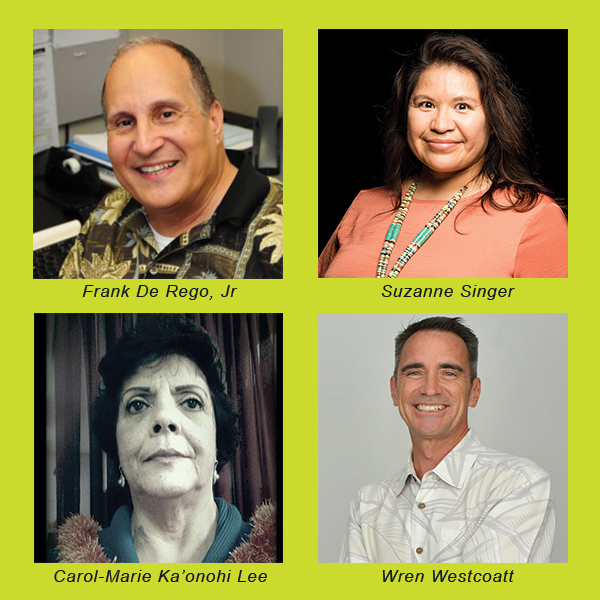 De Rego said, “This panel discussion was one of numerous conversations at this year’s HEC about the importance of cultural knowledge and values in such things as systems of governance, sovereignty, economy, and energy project development.”
De Rego said, “This panel discussion was one of numerous conversations at this year’s HEC about the importance of cultural knowledge and values in such things as systems of governance, sovereignty, economy, and energy project development.”
Panelists:
Carol-Marie Kaʻonohi Lee, Poʻo, ʻAha Moku O Honuaʻula Council
Suzanne Singer, Founder and Executive Director, Native Renewables
Wren Wescoatt, Director of Development, Hawaii, Longroad Energy
Carol-Marie Ka’ Onohi Lee said, “Developers contact me to learn the lay of the land about areas they want to develop. We work with the method of managing the land ‘from mauka to makai’ because mauka affects the ocean. To better serve the community, developers need to understand basic native Hawaiian values in addition to historical and generational knowledge.
“The earlier the developer consults with us the better it is to discuss any cultural impacts to the environment, as well as to Native Hawaiian resources. Being responsible to the host culture lays the basic foundation for a successful relationship prior to even proposing the project.
“As the initial conversation gets further along, the developer is usually accommodating and can offer the community options for what they would like to see. Modifications are always needed on a project, hence the importance of balance and compromise.”
Wren Wescoatt said, “Building trust and respect within the context of equitable community development is vital. As a local representative in clean energy transition, my job is to help stakeholders understand the culture and values of the host community. My company develops and builds large utility-scale energy projects, wind and solar. I assist them in the context of who our host community is in Hawaii, their culture and the environment around the project.
“We consider what is personally important to the people, in terms of their values and how our plan will fit in their community. Planning a project from the inception with community members is a new way to approach it, even to designing the project. You must ask people what is important to them; what are the stories and the cultural lens of the area, including agriculture, education, and respect for cultural and archaeological resources. It takes work and patience to be willing to change the project if needed. Community outreach has to be a two-way conversation. You have to be sincere and build trust in order for the conversation to be honest. A successful project here in Hawaii does not just produce clean energy, it needs to respect the values of the community.”
Suzanne Singer said, “The mainland and Hawaii have strong cultural ties to community and land, both vital to the development of renewable energy projects. The cultural knowledge and values of our indigenous Navajo and Hopi nations, many of whom are off the electric grid, is essential to discussions with developers about our economy and energy transition.
“In Navajo and Hopi nations, energy access is still an issue. The Navajo nation is about 27,000 square miles of land and about 15,000 people still have no access to good electricity. My organization, Native Renewables, was started to work on these vital issues. We focus on residential solar for families that currently rely on propane lamps, kerosine, and generators to get their power. There is a lot of water infrastructure still missing, internet access, food distribution, and more.
“Our team focuses on education to explain maintenance needs in projects and how they work. We need to be visual so people can conceptualize what is happening. Also, because sovereign nations have their own processes and ways of doing things, developers and tribal indigenous communities need patience working with each other.”
PANEL: Distributed Energy Resources: Clean, Affordable, and Resilient Power for a Carbon-Free Energy Future
Hawaii is at the leading edge of distributed rooftop solar and storage. This panel discussed what is happening in the Distributed Energy Resource (DER) market here in Hawaii and globally as market participants and policy-makers team up to innovate and build a more resilient electrical grid and economy to combat climate change and prosper.
Moderated by: Clarice Schafer, Supervising Utility Analyst, Hawaii Public Utility Commission (PUC)
Panelists:
Jon Fortune, Vice President, Grid Services Market Development, Swell Energy
Robert “Rocky” Mould, Executive Director, Hawaii Solar Energy Association
Kylie Wager Cruz, Staff Attorney, Earthjustice
Clarice Schafer said, “Our discussion concerns the latest developments with DER technologies, programs, and policies in Hawaii. With the upcoming retirement of some of the largest fossil fuel power plants on Oahu and Maui, DERs including efficiency grid services, community based renewables, rooftop solar and distributed storage, will play a critical role in fulfilling the capacity and grid service needs. The launch of VPPs throughout the Hawaiian islands involves the recent establishment of bring-your-own-device programs through the scheduled dispatch writer, and an Emergency Demand Response Program on Oahu that was just recently established to provide incentives to customers for measured load reductions during reliability-triggered events. Also, there are industry efforts to reduce DERs where energy is generated or managed behind the electricity meter in the home or business, that is, generated on the energy user’s side of the meter but still connected to the grid.
“It is imminent now that we get new VPP and DER programs implemented and for people to sign up. The emergency need is because of the upcoming retirement of the 180 megawatt power plant on Oahu as well as for those that will be retired on other islands. These new programs are clean, cost effective ways to mitigate the needs that come with the retirement of the dirty power plants.”
Jon Fortune said, “Swell Energy develops VPPs from DERs, which at this point are primarily solar and battery storage deployed behind the meter to homes and businesses. We connect the communities by deploying these systems to provide customers with benefits such as bill savings, resiliency and reliability. The utility or community will benefit by making the grid more resilient by being able to aggregate these systems over the internet and provide resources to make the grid operation more efficient and less costly.
“What is unique about Hawaii is it manages its own isolated island grids. Because of the increased renewables in Hawaii, the ability is there for us to provide services directly to Hawaiian Electric Company, Inc. (HECO) and we are able to provide fast frequency response support for the grid. Our VPP program targets customers who want to install new solar storage, and also intends to enroll existing battery systems that are already out there in the marketplace, in order to leverage the resources that Hawaii has already installed.
“To date, Swell has approximately six virtual power plants in development across the U.S. Plus, we are developing the VPPs across three islands in Hawaii that represent over 15,000 systems being deployed behind the meter, mostly at residential facilities. The VPP is designed to allow HECO to signal Swell to dispatch the systems to provide services. The program requires an aggregator such as ourselves with a software program that is able to monitor and optimize the performance of the battery. With a VPP there is a lot more active control and monitoring of the system to manage the resources in a more targeted way.”
Rocky Mould said, “We need to discuss opportunities going forward for DERs to provide an alternative to, or an enhancement of, the traditional electric power grid. Distributed rooftop solar has led the way in Hawaii over the last few years. Next is wind. Permits and installations and soft costs have gone up. In Hawaii we are adding the cost of storage also. We need to focus on what to do to bring costs down. In the U.S. the costs are higher than other countries. So, we need policies and programs going forward.
“In our local industry we have a bill passed to simplify the permitting process and the time to get permits through. Per the bill, there is a 14- day period for a completed application to get approval. We also need cleaner and clearer rules for town homes, multi-family and low to moderate income markets put into place. This opens up a whole new market here in Hawaii that will help maximize and optimize renewable energy going forward. Also, it covers smaller scale solar storage and solar hot water projects, as well as electric vehicle (EV) charging stations.
“The Demand Response Program brings resources online as quickly as possible to utilize existing capacity and adds battery compacity to serve this need. It is designed for existing customers to add new battery compacity as well as the EV generation, but also new customers coming in will be able to enroll their batteries. Although we have a long way to go, we are looking forward to new programs going forward.”
Kylie Wager Cruz said, “Some of the more recent policy development programs for DER developments in Hawaii include rooftop solar, home batteries, electric vehicles, and energy efficiency measures like solar water heaters. DER programs are established by the PUC and they preset compensation rates terms. DERs empower communities to participate in renewable energy and provide clean energy services to the grid. We can reduce customer electricity bills, we can avoid the competitive and lengthy bidding process that applies to larger utility-scale projects, and we can avoid community concerns about big projects competing with other large land users like agriculture.
“Oahu is planning to retire its largest power plant by the end of 2022. Due to delays in bringing big solar farms online, they expect an energy shortage during the peak demand period in the fall of 2022 and the fall of 2023. The PUC is looking at all options like DERs and energy efficiency to fill grid needs without resorting to fossil fuels. The new 50-megawatt Energy Demand Response Program allows existing customers to install batteries so they are no longer on the more passive systems. To help them serve their own load at home, they will install home batteries and have the ability to add up to 5 kilowatts of generation to their system. The big focus in the DER docket is to expand access for low and moderate income customers. Some of the ideas on the table are establishing virtual net energy metering for affordable housing, condos and town homes, and establishing DER incentive and solar saving programs.
“Another plan, the Community-Based Renewal Energy Program, is a community solar program where customers can enroll in a renewable energy project that is managed by a third party. The project can be rooftop or off-site. The customers who subscribe would be able to receive credits on their bills for the energy produced by the projects. This can open up access for renters, condo dwellers, and townhome dwellers.”
“At the county level, we have a 100-percent clean ground transportation energy mandate and a 100-percent carbon neutrality goal for the state by 2045. We need to start thinking about utilizing DER programs to maximize the power of EVs that can be coming online in the next two decades. We need programs that encourage charging outside of the peak period and allow for export to the grid. Hopefully, we will also have a program that can possibly use vehicles as a resource to contribute back to the grid.”
PANEL: How Will Environmental Social Governance (ESG) Affect Energy Investment in Hawaii?
This panel discussed how companies’ commitments to environmental impacts, social aspects and governance are impacting investment decisions that may shape Hawaii’s energy future. ESG criteria help investors find companies with values that match their own environmental criteria that may include a company’s energy use, waste, pollution, natural resource conservation, and treatment of animals.
Moderated by: Lorraine Akiba, President and CEO, LHA Venture
Panelists:
Jon Powers, Co-founder and President, CleanCapital
Dana Sato, Director, Leasing & Transactions, Community & ʻĀina Resiliency Group, Kamehameha Schools
Scott Valentino, President, Pacific Current
Lorraine Akiba said, “In keeping up with ESG framework, businesses today require a plan of action that reflects their purpose. It takes real world experience to hardcode ESG principles into growth strategy and operations. It also takes the commitment of leadership to bring people and technology together to drive meaningful action and sustained outcomes for their stakeholders. Disclosures for all companies are more important than ever. Regulatory certainty through ESGs will benefit Hawaii with clear measures and present a level playing field for investors and for those who rate investments in Hawaii. ESG is not just a responsibility. It is a mindset and an opportunity to get the project right.”
Jon Powers said, “At CleanCapital, engaging ESGs started with energy and sustainability. Our founding mission was to accelerate the flow of institutional capital into clean energy. We realized that there was a real opportunity to unleash more efficient cost effective capital in the clean energy market and we are committed to making clean energy accessible to everyone. By professionalizing ESG investing there is understanding of how a project is handled. We look forward to working with Hawaii and bringing investors that have a social impact governed with the values and principles of stewardship of the land.
“Clean Capital breaks down barriers to entry and invites direct investment in the clean energy generation. Using cutting-edge data and analytics, we canvass the market for quality projects and package them into high-performing portfolios for our investors. Our innovative technology streamlines the acquisition process, enabling us to underwrite renewable energy portfolios efficiently and then manage them into the future to optimize returns.”
Dana Sato said, “As the largest landowner in the state of Hawaii, Kamehameha School is attending the HEC from the landowner perspective. We are currently involved in six renewable energy projects at the utility level. What is unique about Hawaii is that when we look at our land we see our responsibility to take care of our ‘aina. We recognize the land is chief and it will be here forever, and it truly rules. Man is, in fact, its servant because we are here for a temporary period of time.
“We measure the stewardship of our lands against five values: education, economics, environment, culture, and community. When we look at the land from the values we stand on, our expectation is to find energy partners that are willing to work with us. We are not just focused in one area, but all five areas. Many developers come to Hawaii and think they are here to do a good thing, so it is hard for them because we expect a lot more. We expect educational programs to contribute to what they do as well. For example, economics tie into whether they will be hiring our local people here. Culturally, we are sensitive to how the ‘aina is being treated, which ties into community, etc.
“Actually, from a cultural perspective in the ESG movement, an ideal situation for us would be to work with more local companies. It is a good thing that the State is finally going in the right direction with clean environmental and climate-change projects.”
Scott Valentino said, “At Pacific Current, a subsidiary investment platform for accelerating Hawaii’s sustainable future, we are joining forces with local partners and community members to catalyze the development of sustainable infrastructure projects that will advance Hawaii’s environmental and economic development objectives. To deliver long-range positive returns, we incorporate ESG investments into our renewable energy decisions as part of our selection process. We identify, assess, and manage environmental and social risks to ensure that our potential partners’ values align with our own and positively impacts our communities.
“Pacific Current’s multi-sector sustainable infrastructure strategy goes beyond electricity to be aligned with Hawaii’s de-carbonization goals, of which transportation is one of the largest contributors. We operate in all the sectors that contribute to Hawaii’s carbon-neutral goals by 2045, offering solutions to developers that can help with the adoption of technologies for cost-effective solutions.”
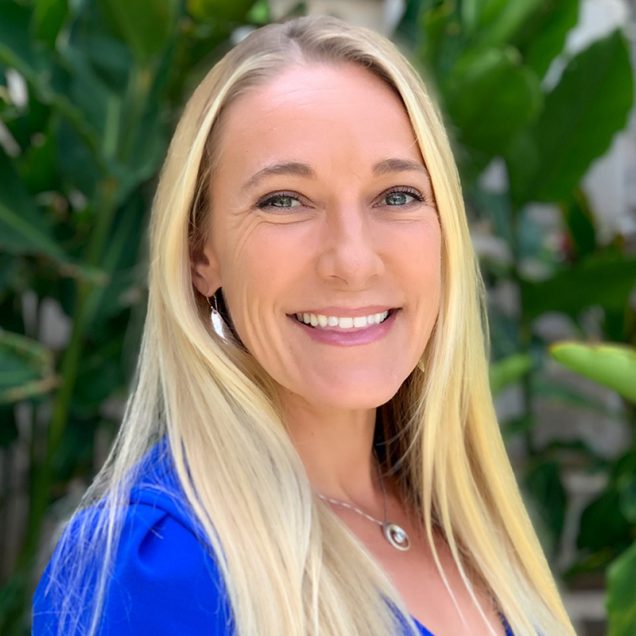
Jennifer Potter, Hawaii PUC
INTERVIEW: Jennifer Potter, Hawaii Public Utilities Commissioner, on the subject of Performance Based Regulation (PBR)
Potter said, “PBR includes a set of alternative regulatory mechanisms intended to focus utilities on performance and desired outcomes, such as increased renewable energy, lower cost, and improved customer service. The PUC issued a decision and order approving a portfolio of new Performance Incentive Mechanisms (PIMs), scorecards, and reported metrics. The portfolio went into effect on June 1, 2021.
“PIMs, key components of the PBR framework for HECO, are built on the historic transformation of the electricity industry in Hawaii. The portfolio offers additional financial incentives targeting exemplary performance in achieving the State’s clean energy goals, and penalties for the reverse. The PUC continued the collaborative process utilized to develop the PBR framework, and worked with a wide variety of stakeholders to finalize the critical details of the performance mechanisms.
“The commission’s order, developed over an almost three-year stakeholder proceeding, aligns the company’s actions, the customer’s experience, and Hawaii’s ambitious clean energy goals. It provides the right incentives to aggressively move ahead with modernizing the company’s and Hawaii’s energy system.
“Hawaiian Electric became the first U.S. investor-owned utility to transition away from cost of service regulation. We are moving away from the regulatory compact that has been in place for over 100 years to this new regime that will be evaluating the companies based on their performance rather than looking at the capital expenditures and the capital that they earn. Over five years, it will move from earning revenues based on capital expenditures to PBR and financial stability, based on limited rate-based revenues and rewards for achieving public policy goals and cutting customer costs. There will be day-one savings when this goes into effect and we expect to see more savings as the other opportunities are used.
“The approved portfolio of scorecards and reported metrics will track and measure utility performance across a wide spectrum of categories to provide valuable data that can inform future planning and development efforts. It is a big paradigm shift. We will build a platform and web page to show performance on several metrics. The metrics from the PBR will be recorded on the electric company website where we will see the advancements.”
PANEL: Possible Federal Decarbonization Standards: How Could That Change Policies, Plans, Rules, and Regulation in Hawaii?
Discussions are taking place in Washington DC on establishing national clean-energy standards based upon one of several national, economy-wide decarbonization standards. This panel talked about how such a national clean-energy standard could impact Hawaii’s efforts, its impact on Hawaii’s policy, plans, regulation, and other goals to achieve 100-percent Renewable Portfolio Standard (RPS).
Moderated by: Colton Ching, Senior Vice President, Planning & Technology, Hawaiian Electric
Panelists:
Murray Clay, President, Ulupono Initiative
Scott Glenn, Chief Energy Officer, Hawaii State Energy Office
Josh Sawislak, Senior Advisor, Hawaii Green Growth
Ed Sniffen, Deputy Director for Highways, Department of Transportation, State of Hawaii
Colton Ching said, “I work on strategies and plans for Hawaiian Electric in all the five islands we serve. This topic of de-carbonization is something that is front of mind for me as we plan out the electric system in Hawaii, not only for our local and state goals, but for how we become part of the global effort to de-carbonize the entire world economy.
“Currently, we are working on reducing or eliminating carbon from certain sectors of transportation. There are a lot of opportunities to electrify the transportation sectors, such as light and heavy duty vehicles, marine transportation, and even aviation. Electrification opportunities to reduce gas emissions are going to require greater production of electricity and lower carbon. Reducing the greenhouse gas economy is a challenge with tourism being up and a big part of a carbon-intensive activity.”
Murray Clay said, “I feel like the RPS that we have in Hawaii is already at a higher standard. I think that our renewable standard is in a great place, although we are not connected to a continental grid; our position of solar and wind is better than almost anywhere on the mainland.
“Electrification is our path forward. We are seeing more and more of inter-island business plans to fly electric planes. The price up front for EVs may be a little more, but everyone can benefit from the fact that the total life cycle cost is cheaper.
“We want to protect Hawaii’s natural beauty. Locals and tourists would rather see a solar or wind farm than a power plant. They do not want to see a ruined environment in a place they live or visit.”
Scott Glenn said, “Hawaii has an ambitious goal to be carbon-negative. We have a net-negative goal and want to get it done by accelerating progress to get carbon dioxide out of the atmosphere no later than 2045, and not put anymore into it.
“The cutting edge piece will be the electrification of transportation. It is the really important work on the ground. We must start transforming our fleet and hope residents will do the same in the near future. Before Covid started, we put together an innovative procurement method to use sustainability as a service by leasing EVs and charging stations. Federal electrification might benefit us. One of the best forms of energy efficiency is to promote bicycling, walking, and using mass transportation buses to help with de-carbonization.”
Josh Sawislak said, “During his climate summit, President Biden announced a new nationally determined contribution for the U.S. under the Paris Agreement that would reduce carbon emissions from the 2005 levels by 50-52 percent. Plus, the administration is talking about 100-percent carbon-free electricity by 2035. This is a driving goal that lines up well with what Hawaii is trying to do. My guess is that in our new clean-energy standard there is a nationwide standard. We should look at it as a national program with a goal we want to get to. The problem we have to solve is carbon. We have to understand that we must de-carbonize.
“We have great opportunities to do experimental work to convert the state’s fleet of vehicles to electric as the federal government electrifies their military, civilian, and postal fleets. Conversations around the federal fleet will hopefully work for our state and local electrification. We can also use the new fleet we create to help us with storage. We have great opportunities in Hawaii. We have already demonstrated how to make the island more sustainable.”
Ed Sniffen said, “Hawaii is well on its way to providing a credible first-hand account of the need for climate resiliency in transportation. Based on fuel consumption alone, transportation is a large contribution to the release of carbon dioxide into the environment in Hawaii and globally.
“There are important measures to converting the transportation sector. We talk about barriers all the time in electrification. On the private side the barriers have always been cost, and on the other side it has always been contracting. However, overall, electrification is a net saving for the state.
“We already have a system that we can build on and put into place. We need to make sure we have emission reductions through the technologies that we have, and that EVs are part of that. Further initiatives are possible because of networking, resource sharing, and coordination at all levels of government in Hawaii. Nationally, we encourage sharing of resilience initiatives in all areas.”
SPOTLIGHT TALK: Investing in EVs by Ulupono Initiative
Stakeholders from across the state took part in the Ulupono Initiative video which termed Hawaii as the first to enact a 100-percent carbon-neutral goal when it signed a law to become carbon-neutral by 2045. Hawaii took the wheel on its own transportation future through a statewide, multi-agency service contract. Currently, there are approximately 300 charging locations in the state and nearly 700 ports.
David Y. Ige, Governor of the State of Hawaii, said, “As the most oil-dependent state in the nation, Hawaii spends roughly $5 billion a year on foreign oil to meet its energy needs. Making the transition to renewable, indigenous resources for power generation will allow us to keep more of that money at home, thereby improving our economy, environment, and energy security.”
On the national level, it was mentioned that President Biden plans to replace the government fleet with EVs, while leading investors urge all governments to end support for fossil fuels. Also, groups controlling an enormous amount in assets signed joint statements calling on world leaders to bolster net-zero targets.
DAY 2
INVITED TALK: Mark Toney, Executive Director, TURN (The Utility Reform Network)
Stop Overpaying For Solar and Other Pathways to Affordable Bills
As Executive Director of TURN, Toney sets the organization’s strategic course and directs TURN’s legal and political advocacy on behalf of over 37 million Californians.
Toney said, “TURN, founded in 1973, fights for the cleanest energy and best phone service at the lowest prices. We participate in over 100 California public utility commission proceedings annually. We have a lobbying team in Sacramento to impact legislation, and an organizing team to bring communities of color into policy design and decision-making. Plus, TURN has a communication team to drive the public debate on key policy initiatives. TURN believes that we can and should live in a society in which electricity, broadband, and phone services are treated as basic rights for all families.
“Planet-change policy needs to be centered on climate equity. The cost of greening the grid should not cut off black, brown, indigenous, or any low-income communities from the grid because the prices are too high. In 2019, California utilities cut off power to over 800,000 families just because they fell behind in paying their bills.
“We cannot afford to let electricity prices rise so high that it undermines fuel-switching to electric vehicles from gasoline vehicles, to building electrification from natural gas. We need to design electricity rates for an equitable equity transition, because if we do not bring down the prices we are going to have a crisis on our hands. In order to reach climate equity we have to have a paradigm shift, we have to stop depending on subsidies as the primary driver for climate policy and we need to move from subsidies to the regulatory requirements. We need to figure out a way to move residential energy efficiency from being dependent on building and appliance standards.
“When it comes to EV charging stations, we need to replace subsidies with revenue from the transportation sector. When it comes to building electrification we need to replace subsidies with a requirement that new buildings are all electric and existing buildings get transformed to electric as a requirement to escrow.
“In California, the largest driver for increasing climate equity is overpaying for rooftop solar. Non-solar customers are overpaying for rooftop, solar customers are paying too little for the energy grid, and low-income communities of color are systematically excluded from rooftop solar. Climate equity means that all communities get to share clean-energy benefits. Currently, rooftop solar customers benefit from generous subsidies that significantly favor higher-income homeowners and disproportionately leave low-income and people of color behind.
“Smarter and more solar incentives will provide a factor to transition to solar energy, lower the cost of electricity bills, and create a more fair and balanced system. Prioritizing the largest renewable energy system which can support entire communities instead of single homes can make renewable power a reality for low-income families and help us achieve our climate goals more quickly.”
DISCUSSION: Hawaii’s Inclusive Energy Transition
Chief Energy Officer Scott Glenn of the Hawaii State Energy Office and Community Leader Sunny Unga discussed including welcoming perspectives and input from local communities during Hawaii’s energy transition.
Scott Glenn said, “Due to the Kahuku incident in 2019, where approximately 160 arrests were made over wind-turbines protests, I sat down with community activist Sunny Unga to discuss what future energy plans should look like with respect for the people and their communities. It is apparent that policymakers and developers will have to find a way to navigate community concerns if they want their projects to move forward. A major issue is community involvement.
“Conversations that Unga and I had will help shape the Energy Office going forward. We exchanged questions at the HEC to listen and hear each other’s opinions even if we did not agree on everything. I believe it is important to keep the line of communication open as the job of the Energy Office is to work with everyone in the State─ stakeholders and communities.
“I reached out to the residents of Kahuku and the developers to learn more through the Aloha Spirit Law. I got to know Unga, who said our energy policy work does not include the community. I now realize that it is not only about technology. The challenge is how we work together.
“It is important to know when to consult with the community and how to work with folks across all the islands. The Energy Office must be doing a lot more of that. We want to put upcoming meetings on our website and be a source of information that can be used to help make decisions. We are trying to help communities with energy scale projects. However, a lot of the projects are location- based which provides many challenges. We must add Aloha and show we can work together and listen to each other. We have to be wise stewards of our resources together.”
Sunny Unga said, “We need to reflect on what happened in Kahuku that led to the mass arrests in the community and be willing to make an honest assessment on what failed our Kahuku community. The utility and developers need to listen to our experiences to be more transparent with the community.
“I appreciated the conversations at the HEC about equity and community; however, these discussions on inclusiveness are being had without the community present. Therefore, it is vital that we do what we are philosophically talking about: adequately address those principles of equity with community involvement and consent in a meaningful way. I believe this starts by giving the community a seat at the table, having community approval before all the plans and permits are decided upon.
“I believe in the mandate to get to the 100-percent renewable energy goal; however, my question is how do we become more inclusive in our energy transition? Understandably, ways to combat climate change and projects are needed. Nevertheless, these goals need to encompass indigenous rights and sustainability as a whole. If it is only focused on what the utility and developers want, regardless of our other important goals, such as food security and agriculture, then we will end up with bad projects.
“I want to reiterate that this top-down profit-driven approach really puts corporate interests and profits over the well-being and interest of the community. We need to ensure that communities are active participants and meaningfully engaged in the development of creative energy projects that are culturally driven. The current system is broken. It does not seem to matter how much effort we put in, we continue to feel that we are not being heard. What does a meeting mean if the developer does what they want at the end of the day? Hawaii has to lead in a right and pono way with equity, with community in mind, and with environmental justice.”
VIDEO PRESENTATIONS: Community Insights: Different Views, Similar Goals
A series of interviews arranged in collaboration with Josh Porter of Solar Coaster showcased the energy innovations, challenges, and goals within our island communities. The Community Insights video conducted by Porter and Conference Chair, Doug McLeod, featured Leilani Chow, Project Manager for Molokai Clean Energy Hui; Henry Curtis, Executive Director and Vice President of Life of the Land; and Bob King, President and Founder of Pacific Biodiesel Technologies, LLC.
Leilani Chow said, “The Molokai Clean Energy Hui (MCEH) is an independent community-led group committed to helping Molokai become a sustainable, clean-energy community. I facilitate the group’s work on energy conservation, renewable energy, and clean transportation options for the island.
“I am a Kanaka Maoli aloha ʻāina advocate raised on Molokai, and have worked with Sustainable Molokai since 2010, first as a student volunteer, then as an intern, and most recently as the Hui Up Appliance Exchange Project Coordinator as well as Coordinator for the newly formed MCEH. We aim to help the community understand and engage effectively with the complicated processes and project proposals surrounding renewable energy. We also offer early vetting and input to potential energy developers and other organizations to help them understand Molokai’s priorities, questions, and concerns regarding the impacts and benefits.
“MCEH would like to see clean-energy goals and achieve 100 percent renewable energy. However, we are very aloha ‘aina so there are things that we are not willing to compromise on. We are working on a way to meet in the middle to have mutually beneficial projects. Based on our size—approximately 7,500 people live on Molokai—we need only a couple of large-scale projects to take care of our sustainability and energy resiliency needs.
“Currently, MCEH is working on a resilience plan with best ways to stabilize our grid. Once all the technical aspects are taken care of, and the community is brought into the conversation, it will be easier to find a developer who understands our needs. Building trust and respect between stakeholders within the context of equitable community development is vital. The Molokai community is continually active towards our energy future.”
Henry Curtis said, “Technology must be resilient. There are bad actors out there so we have to evaluate the bad actor risk factors. It must be considered. Infrastructure can be attacked, through hacking or some other form, especially in Hawaii. We must think about how to design a grid that is environmentally, culturally, community and cyber-community wise—a smart way to the future.
“Resilience has mostly centered on hurricanes; however, now technologies and projects need to be considered for safety. We have evaluated the risk from nature. Now we need to consider a risk that is done purposely.
“We are excited to hear about VPPs. However, when the control is in a centralized location we take a risk that anyone can get in and do harm. Dispatchable power means one person can control it from miles away. Vulnerability to infrastructure is a key issue. The challenge is how to safely design our grid.
“The military says a grid system is vulnerable the more we put on it, and an attack can come from anywhere. There are efforts under way to deal with the cybersecurity and climate-change threat. We need to begin to think about how to design our grid so it will be environmentally and culturally designed for protection.”
Bob King said, “I have been in business for 25 years making biodiesel in Hawaii. We have built dozens of plants around the world. However, in the last five years we have concentrated in Hawaii to make our home a better place. Biodiesel fits in the renewable economy as a gold standard of renewable energy. You can store it easily and use it when you need to run both mobile and power generation equipment.
“The challenge is where biodiesel fits in our energy future. We have to follow the science, and keep all options open. We are going to need diversity; however, the bad guy is fossil fuel. We will need huge batteries to make it through a cloudy windless week. Biodiesel is a perfect fit. It lasts for several years without degrading, and can be used as little as possible. The last ten or twenty percent is where we can make it.
“Also, biodiesel supports growing crops for food and energy. They fit hand to hand. We use sunflowers as converters of solar energy to oil to liquid fuel. The challenge is to make sure it supports food production as well. It is vital to give farming an income they can survive with and grow food for us. Do not bypass biodiesel. It is a key piece of energy transition for Hawaii and the world.”
PANEL: Hydrogen Talk
Facilitated by: Joshua W. Porter, Founder & Co-host, Solar Coaster
Panelists:
Chuck Collins, Board Member, Hawaii Hydrogen Alliance (HHA)
Michelle Detwiler, Executive Director, Renewable Hydrogen Alliance
Chuck Collins said, “HHA is a Hawaii-based nonprofit advancing hydrogen production from local renewable energy resources. We assist with education, policy, and projects that help move green hydrogen forward in Hawaii and throughout the Pacific region.
“Hydrogen is a versatile fuel or energy resource to be used for transportation, buildings, and for the grid to provide electricity. One of the nicest things about fuel cells, which are part of the whole hydrogen game, is that they omit the electricity and heat; allowing the opportunity to offset things like propane and other fossil fuel resources to make hot water. Presently, there are many opportunities for hydrogen across different sectors.
“Hydrogen and oxygen are bonded together by energy. To split the water into hydrogen you have to shock the water molecule and then capture the hydrogen, store it in canisters and truck it to different sites. I want to mention that hydrogen can also be created from other resources besides water, like agricultural waste and those kind of things. Electrolysis, the process of using electricity to split water into hydrogen and oxygen, is a promising option for hydrogen production from renewable resources. This process takes place in a unit called an electrolyzer, the system that creates the hydrogen gas.
“Water-splitting is the chemical reaction in which water is broken down into oxygen and hydrogen. Efficient and economical water splitting would be a technological breakthrough that could underpin a hydrogen economy, based on green hydrogen. Hydrogen is becoming an essential part of the energy mix.”
Michelle Detwiler said, “Renewable Hydrogen Alliance is a 501(c)(6) membership organization based in Portland, Oregon. We advocate for renewable electricity to produce climate-neutral hydrogen to supplant fossil fuel consumption across multiple economic sectors. We are a trade association with more than 70 members in North America and around the world, including utilities, advocacy groups, manufacturers, providers within manufacturing supply chains, consultants, developers, and others dedicated to the mission of using renewable electricity to create clean fuels. Hydrogen has been talked about for decades. However, recently things have appeared to be accelerating as investments and government support are growing and the hydrogen technology is ready to further scale-up.
“Hydrogen production uses renewable electricity to create a non-polluting fuel for vehicles, vessels, industry and even homes. It can provide a significant piece of the clean-energy mix for the Northwest and beyond, and its production can generate jobs and economic value for the region. Renewable hydrogen is a critical fuel for the electricity, transportation, and industrial sectors. This molecule, derived from renewable electricity, is truly the only scalable zero-carbon fuel that can help advance our electrification and decarbonization goals. Presently, we are working on managing large micro-grids that might include an electrolyzer in their multi- megawatt solar-plus-storage system.
“We are delving deeper to uncover and discuss the role of hydrogen in the energy transition, to hear the latest advancements in its production, distribution and storage. Hydrogen will play a crucial role in meeting the net-zero target by the year 2045, and could help de-carbonization efforts in a number of sectors, particularly in sectors that are hard to electrify, and where greenhouse gas emissions are difficult to abate. Nevertheless, a number of regulatory issues will need to be addressed before hydrogen can play a larger role in the domestic industries.
“The Pacific Northwest is looking at a policy landscape where the energy actors and transportation actors have to make changes and look at every option on the table for how they are going to de-carbonize. We need a financial policy landscape as well, such as tax credits to help initiate projects. Partnerships are needed to scale-up renewable hydrogen in the region to benefit both the economy and the environment.
“There are different types of hydrogen. Green hydrogen is produced using renewable energy and electrolysis to split water. It is distinct from grey hydrogen, which is produced from methane and releases greenhouse gases into the atmosphere, and blue hydrogen, which captures those emissions and stores them underground to prevent them from causing climate change. Lastly, there is pink hydrogen, which is generated through electrolysis powered by nuclear energy. We want to put a spotlight on what is already being done to advance the hydrogen sector and recommend a pathway for success into the future.”
PANEL: Carbon Pricing
Moderated by: Maria Tome, Managing Director, Energy Efficiency and Renewable Energy, Hawaii State Energy Office
Panelists:
Makena Coffman, Director, Institute for Sustainability and Resilience, University of Hawaii Mānoa
Neil Dobson, Executive Director, CleanBC Implementation
Representative Nicole Lowen, Chair, House Committee on Energy and Environmental Protection, State of Hawaii
Maria Tome introduced the panel adding, “We need to address the findings of Hawaii’s carbon pricing study, carbon tax experiences in British Columbia, and the economic effects and effectiveness of carbon-based dividends.”
Nicole Lowen said, “I represent the policy-maker perspective on the carbon pricing issue in Hawaii. The discussion began in 2019 in strong support of carbon pricing as a way to mitigate climate change. At that time, there was an increase in public awareness of carbon tax as part of climate action and a carbon-tax trend. In Hawaii and nationally, groups have been fixing on this idea as a solution for reducing carbon emission.
“As policymakers, we have to be concerned with real world decisions as well as the impacts they will have. Also important are the political realities of what we can do, such as how high does the carbon tax have to be to be effective, and is it viable to jump into that kind of price point? In 2019, we passed a bill to fund a study to look at what the impacts of carbon pricing would be in Hawaii, which Professor Coffman led. We continue to have conversations about the study at the state legislature. This past session there were a lot of uncertainties in the state budget, which is why we are still in the midst of having the carbon tax discussions.”
Makena Coffman said, “Some of the major highlights from our study, requested by the legislature and commissioned by the Hawaii State Energy Office, are what are greenhouse gas emissions and what are we talking about in terms of reductions to meet the state’s 2045 net-negative goal. The most recent set of inventories done by the ICF (the World Health Organization’s International Classification of Functioning, Disability and Health) is on the State Department of Health’s website. Our emissions have stayed relatively flat. We are not yet in the downward trajectory that would need to happen in terms of meeting a net-negative target by 2045. The question is what are the economic and greenhouse gas impacts of a carbon price and how could a carbon price help us meet the greenhouse gas reduction goals?
“Our study used an economy-wide model and we looked at different scenarios of carbon prices and how they might be used. We chose price pathways from the Obama administration, a good starting place to understand global impacts. Secondly, a higher price pathway to access how high the price would have to be in order for carbon pricing to be a meaningful player within the greenhouse gas reduction goals that have been set. We looked at different revenue recycling schemes, such as revenues going back to government spending dollars, and then as a dividend to households, so whatever revenues come in from the carbon tax are given to households in equal shares.
“In the greenhouse gas summary we found that a social cost of a carbon-level carbon tax would reduce greenhouse gas emissions in Hawaii from their baseline levels about 10 percent. We saw the greenhouse gas reductions take an extremely high carbon price to get us heading towards that negative goal more meaningfully.
“In terms of economic impacts, we saw that it is a contractionary effect on the economy but it is relatively small, particularly in the social cost of the carbon scenario. Lastly, we were able to do the most important metric in different income groups with a lot of data. The main takeaway is what makes households better off is the social cost of carbon, with a dividend backed up and proportionately benefiting low-income households more. Another take away of the study is the sweet spot between greenhouse gas emission reductions and policy design that can help households positively in this transition.”
Neil Dobson said, “The CleanBC Plan puts our province on the path to a cleaner, better future with a low-carbon economy that creates opportunities for all residents. CleanBC is committed to reducing greenhouse gas emissions and to reaching BC’s 2030 climate targets, setting a pathway to a sustainable, resilient and competitive economy.
“Our CleanBC communities fund infrastructure projects such as energy efficient buildings, clean transportation, and the generation of renewable energy in all sectors. Our roadmap to 2030, being released by the end of 2021, will explore what action is needed in various pathways that require market transformation to achieve our targets.
“BC has had the carbon tax, North America’s first broad-based carbon tax, since 2008 across all combustion emissions. It provided a signal across the economy to reduce emissions while encouraging sustainable economic activity and investment in low-carbon innovation. The carbon tax applies to the purchase and use of fossil fuels and covers approximately 78 percent of provincial greenhouse gas emissions. Emissions decreased by 5-15 percent from what it would have been in the absence of the tax between 2008 and 2012. The Climate Action Tax Credit of $193.50 per adult and $56.50 per child was effective as of July 2021. Approximately 1.3 million British Columbians benefit from this credit.”
INTERVIEW: Dawn Lippert, Elemental Excelerator CEO
Dawn Lippert was interviewed by Leslie Wilkins, President and CEO of MEDB, explaining Elemental’s investing philosophy with examples from their portfolio of clean energy companies.
Leslie Wilkins said, “In addition to financial capital, the energy transition investment in Hawaii includes our cultural, social, and human capital. These are at the core of Elemental’s investment mission where they use impact first and then return, which are well correlated. Their new Five-Year Strategy is a roadmap to scale climate and social equity solutions. This plan outlines how their team is evolving to both deepen and expand their impact, and further unlock entrepreneurs as a powerful force to address climate change and social inequity.
“Working with the community is absolutely imperative for a sustainable success and moving us towards our clean-energy goals. It is vital for Elemental to be integrated into their respective communities and build capacity there with an exclusive workforce in technology and energy. Moreover, as the founder of WIRE (Women in Renewable Energy), Lippert has advocated for more women and underrepresented organizations to be involved in technology, entrepreneurship, and leadership to advance our energy goals and address climate change.”
Dawn Lippert said, “Elemental Excelerator is working to invest in technologies, communities, and solutions to get at the root of the systems behind climate change. We are a nonprofit that believes in forces for change. We think of the community investment that goes alongside the economic and capital investment. So, our solutions to climate change and to pressing environmental challenges are seen through the lens of entrepreneurs who are building companies that will grow industries leading to a clean environment.
“We have invested in over 100 companies so far and they are across key sectors, energy, water, food and agriculture, transportation and mobility, everything related to the circular economy, and carbon reduction. We believe in investing in communities at the intersection of social equity and climate-change technologies.
“An example of a local company that has made an impact is Farm Link Hawaii. When they lost their outlets due to the pandemic, they had to pivot and sell directly to consumers. Now they connect local growers and buyers via their innovative online marketplace and supply-chain infrastructure. They make it easy for household and commercial buyers to discover and purchase local food for delivery or pickup. They have built a thriving, equitable food system in Hawaii by empowering local farmers and improving access to local foods. Farm Link is a good example of investing for impact first, for farmers, local food, health, and families.
“Climate change is a key issue for us in communities. The way you think of engaging a community has to be different from the way of scaling any kind of technology. At Elemental, we do not just invest in technology, we actually fund the projects. We have learned that when technology starts to interface with community, the best strategy is to establish deep local partnerships to execute the projects.
“An example of community input is a current cesspool challenge across Hawaii, which comes from untreated sewage. This affects our ecosystems, our yards, communities, and nearshore oceans, creating serious problems for human and ocean health. We found a company last year that might work on this issue, along with a local community group run by Stuart Coleman, to bring a solution to Hawaii. Before making any investment, we brought the company’s ideas to the community to see what they think of how it might be implemented. Designing a plan with community input from the beginning matches the investment on the technology side.
“Many factors have come together in 2020-21 with incredible alignment. We have invested in executive coaching for women in technology, who work to bring about a sustainable Hawaii powered by clean energy, as well as for young people to contribute their gifts in whatever way possible. We believe in work-based learning to continue to build future success. We have learned a lot along the way about commercializing technologies and about the intersection of technology in community, about interns, workforce, and bringing everyone into the fold. Now, we want to help the whole sector meet this moment. We want to open all possibilities, accelerate important projects, and work towards meeting our climate goals.”
PANEL: Energy Burden and Equity, Designing Energy Efficiency Programs Post-Covid
Moderated by: Caroline Carl, Deputy Director, Hawaii Energy
Panelists:
Ariel Drehobl, Local Policy Manager, Energy Equity, American Council for an Energy Efficient Economy (ACEEE)
Rebecca Foster, President, VEIC
Laurien (Lala) Nuss, Climate Resilience and Equity Manager, Office of Climate Change, Sustainability and Resiliency, City and County of Honolulu

Clockwise from top left: Caroline Carl, Hawaii Energy; Ariel Driehohl, ACEEE; Rebecca Foster, VEIC; Lala Nuss, Office of Climate Change, Sustainability and Resiliency, City and County of Honolulu
Caroline Carl said, “Energy efficiency programs throughout the country are digging deeper into equity challenges and solutions, and how energy burden is measured. With the highest electricity rates in the country, many families and businesses in Hawaii struggle to afford high energy bills every month. This has only been exacerbated by the high cost of living and the economic downturn caused by the Covid-19 pandemic. These high energy burdens disproportionately impact those already struggling to make ends meet. Cities must play a role in establishing an equity-centered practice because this year people literally cannot pay their electric bill.
“At Hawaii Energy, we educate island families and businesses about the many lasting benefits of clean energy. We encourage and reward practical energy-saving decisions, help save money, grow our economy, and reduce the demand for electricity imports. Our mission is to empower island families and businesses to make smarter energy choices to reduce energy consumption, reduce bills, and pursue a 100-percent clean-energy future.
“One of the core tenants of our work is on the focus for accessibility and affordability for clean energy technology so that everyone can move forward together. The past 12 years, the Hawaii Energy programs have provided over 2 billion dollars in electric-bill savings, bringing immediate relief to those families and communities who need it the most, especially over the last year. The ladies on this panel all work to embody the critical responsibilities we have to reduce energy insecurity and improve well-being as we move towards our clean energy future. Energy burden has become an important guidepost for efficiency programs and cities.”
Ariel Drehobl said, “ACEEE is a nonprofit research-based organization committed to advancing policy that moves us towards a more equitable energy system. We think of equity in terms of procedural, distributional, structural, and transgenerational lines. We really need a system that institutionalizes accountability and embeds inclusive, accessible, and authentic engagement. It is important to recognize and address inequitable structures, ensure representation and influence for community members, consider intergenerational impacts, and achieve a fair distribution of benefits and earnings across communities.
“For nearly 15 years, ACEEE has released scorecards and progress reports with the aim of benchmarking and driving clean-energy actions along the state, city, and utility lines. We make hundreds of these metrics available to the public on our online data bases. This year’s initiatives will guide our additional metrics visibility across all of our score cards. We will have two advisory groups. One will be community organizations and advocates. The other will be made up of utilities and public administrators. Both groups will help generate proposed metrics and changes to scorecards moving forward. The goal is that the metrics on the scorecards reflect the interests of the marginalized communities and represent the system. We also want to ensure that all the leaders in our scorecard are leading on equity in order to be scored at the top. Results of the equity-focused metrics initiative in our scorecards will be published at the end of the year.”
“Our most recent energy burden report was published in September 2020. Takeaways are that energy burdens across the country show that low income families experience high energy burdens which means that they are paying more of their income on energy bills. It was shown that these disproportionately high burdens were a universal issue, so work needs to be done with utilities across the local, state and federal government to address these disparities. It is a great metric to measure equity in the energy sector, but it only tells part of the story. We should think about equity across everything offered by the utility, in all different types of programs.”
Rebecca Foster said, “In Vermont, VEIC, a nonprofit organization, has always had a strong commitment to bringing the benefits of clean energy to low-income people and communities. Over the years, commitment has expanded from low-income customers and communities to looking at energy justice in a stronger way. We are trying to support communities that have had negative impacts on our society’s historical energy choices, and are committed to looking at what it will take to fix the immediate climate emergence. We need to enlist everyone in the clean-energy transition and ensure that everyone can access, and then realize the benefits that clean energy brings.
“The need for a cleaner, more equitable and just energy system is why VEIC works with organizations across the energy landscape to create immediate and lasting change. Since 1986, we have served as an objective partner for our clients as they navigate complex energy challenges. With expertise in energy efficiency, building and transportation electrification, and new approaches for a clean and flexible grid, we are bringing more solutions to the market to meet energy goals. Today, I am excited to enlist all of you in this difficult but absolutely necessary work. We must shift our energy system forward and bring existing crucial benefits from clean-energy programs and projects to the people who really need them.”
Laurien Nuss said, “The Honolulu City Council unanimously passed the first Climate Action Plan (CAP) on June 2, 2021. The Plan established nine strategies and 47 actions, many related to energy efficiency and renewable energy with equity practices as it relates to resiliency efforts. It commits to a path that will cut carbon pollution on Oahu by an estimated 45 percent by 2025 and 60 percent by 2035. The main areas of action include electrifying ground transportation and increasing walking and biking, encouraging more density and mixed land use, increasing energy efficiency and renewable energy, and reducing the amount of solid waste on Oahu.
“The CAP is a science-based, community-driven strategy for Oahu to combat climate change and eliminate fossil fuel emissions, the root cause of global warming. The CAP lays out a detailed list of programs, policies, and actions that our island can take, alongside state and federal actions to reduce greenhouse gas emissions over the next five years and put us on the path to 100-percent carbon-neutrality by 2045. With overwhelming approval, the CAP ensures that government tackles the issue of climate change, increases city sustainability, and works with communities to build a more resilient Oahu.
“The recent creation of the equitable community engagement guide is another example of the adoption of the city’s first ever CAP. We are working with city agencies to build capacity and centering equity through utilizing data like energy burden, metrics like community led goals, and socio-economic and community engagement practices. The guide is a resource to assist in designing community engagement procedures that align with the city’s goals, and are meant to be representative of, and in service to, the socially and functionally diverse communities that we have on Oahu. Equity will require intentional investment in relationship and trust building, and undoing certain past harm. Engagement through community relationships and social investment needs to be the same as just investing in the technological side of things.”
PANEL: Deploying Utility-Scale Renewable Energy Projects Across the Hawaiian Islands: Highlights and Comparisons from Individual Islands.
As one of the most remote land masses in the world, the Hawaiian Islands are a unique place to deploy utility-scale renewable energy projects. This panel highlighted the opportunities and challenges of deploying various types of technologies and various approaches to renewable energy project implementation across a diverse range of communities throughout the islands.
Moderated by: Alex DeRoode, Energy Commissioner, Office of Climate Action, Sustainability and Resilience, County of Maui
Panelists:
David Bissell, President and CEO, Kauai Island Utility Cooperative (KIUC)
Mike Kaleikini, Senior Director for Hawaiian Affairs, Ormat
Matthew Shields, Offshore Wind Engineer, National Wind Technology Center, National Renewable Energy Laboratory (NREL)
Todd Yamashita, President, Hoʻāhu Energy Cooperative Molokai
Alex DeRoode said, “Some of the islands are taking various nuances as they approach clean energy in our different communities. There is great acceleration in Hawaii and especially on Maui where we have over 177 megawatts of planned renewable and utility-scale projects over the next three to four years, including 200 megawatts of battery storage. Working towards Hawaii’s 100-percent clean-energy goal, we are seeing the retirement of the Kahului Power Plant in 2024. Mayor Victorino and the HEC are incredibly supportive of our renewable energy efforts. The County has been a long-time supporter of this conference because of the really important information it brings to all of our local stakeholders as well as beyond our state.”
David Bissell said, “KIUC, a Kauai co-op started in 2002, is approaching its transition to 100-percent clean energy differently than other parts of the state. One of our big differences is that we have an elected board of directors who almost, from the start, were pushing to transition to renewables. We started with small utility-scale projects and then with batteries and battery storage to further our renewable expansion. The end of last year we hit 67 percent renewable. The big thing for us has been battery and storage technologies. We were pioneers. It has been a long steady movement for our island as we keep pushing for grid stability and renewables by 2030.
“As a co-op, we worked together to convert our biggest fossil fuel plant. Using renewable generation by pulling renewable energy from our grid, and having significant grid support from the batteries, we continually work hard towards our 100-percent-renewable goals. It has taken all the technologies brought together to achieve that. The next frontier for us is bulk storage because more storage is vital when the sun is going to be the predominant resource.
“Kauai has hydroelectric, the generation of electricity using flowing water to drive a turbine that powers a generator. We have seven hydro units that run about 10 percent of our energy. It is a stable energy source. It gives us diversity when the sun is not shining. If there is rain, we can get more hydroelectric generation to help diversify from just solar-based energy. It also helps grid stability.”
Mike Kaleikini said, “Ormat produces utility-scale geothermal projects in Hawaii that can be developed in a way that addresses cultural sensitivities over the projects. Recently, for a Big Island geothermal project we engaged with cultural practitioners in each area to develop the proper protocols. The major points of these protocols are about appreciation, honor, and recognizing and respecting the elemental nature of geothermal from the cultural aspect. We do blessings, offerings and gifts that share respect for the developing project.
“Reciprocity is a key component of the cultural sensitivities. Although, geothermal technology in itself is a form of reciprocity. It relates to or is produced by the internal heat of the earth. The heat that comes up generates electricity, which is then rerouted back into the earth, giving back the fluids. With this in mind, we appreciate the heat energy we are able to use to generate electricity. The aspect of reciprocity is replacing something in an area if it is disturbed in any way. It is really about honoring and recognizing respect for the natural elements of the geothermal resource in the community.”
Matthew Shields said, “NREL has pioneered many of the components and systems that have taken wind energy technologies to new heights. We have provided global leadership in fundamental wind- energy science research, development, validation activities, and the offshore wind-energy industry. Our lab is one of 17 national labs operated by the Department of Energy. We focus exclusively on all forms of renewable energy, of which offshore wind is one subset of that. Currently, our focus is on applied research, bridging the gap of fundamental science and the industrial part, the people who are actually building and installing the projects. We ourselves do not build projects, but we look at how these projects could be developed at lower costs, lower risks and lower impact to stakeholders.
“My role is to lead the work that we do for offshore wind technology analysis and market trends. I am presently leading a study looking at what offshore wind could look like around the island of Oahu. The study was conceptualized by the Hawaiian State Energy Office and the Bureau of Ocean Energy Management to understand how and if offshore wind can play a role in energy targets set by Hawaii. Our goal is to convey what likely technology, logistic or supply chain, might be used for offshore wind in Hawaii, and comparing what cost and feasibility would look like. We are reaching out with many island stakeholders to provide information about our future in the State. Benefits to offshore wind will be included in our report.
“Demonstration projects worldwide show that it is feasible to put a wind turbine on a floating platform and anchor it to the sea floor using a mooring line and an anchor. It is realistic to build these floating wind projects, but a lot of questions exist about supply chains. Nevertheless, there are numerous logistics involved for building these different components, such as impacts to the environment, to the stakeholders, as well as the view from shore.
“We must also take into consideration the impact to wildlife, fishing, and other competing usages. In addition, the Hawaiian voice must be present at the table for the conversation. We need to incorporate the local Hawaiian communities to understand what the cultural and environmental impacts would be to offshore wind projects. This would be a good technology to balance out solar, which provides power in the middle of the day, where offshore wind could produce nighttime power. They would complement each other nicely.”
Todd Yamashita is the President of Ho’āhu Energy Cooperative on Molokai, a new local entity formed to support community-owned energy projects. Due to technical difficulties with the internet connection, Yamashita was not able to participate in the panel discussion. The cooperative is seeking interest from individuals and companies based on Molokai with qualifications relevant to energy development. Ho’āhu Energy hopes to produce locally owned, affordable, and renewable energy for the benefit of their members, the community, and the environment. Their vision is for resilient, sustainable, equitable, and culturally conscious energy for all. Yamashita leads a consumer cooperative model, not a utility like KIUC. He seeks to aggregate consumers and find solutions that can serve the members of the cooperative.
CLOSING
The conference closed with a special presentation to outgoing Program Committee Chair Doug McLeod who had served on the committee since the conference inception in 2014.

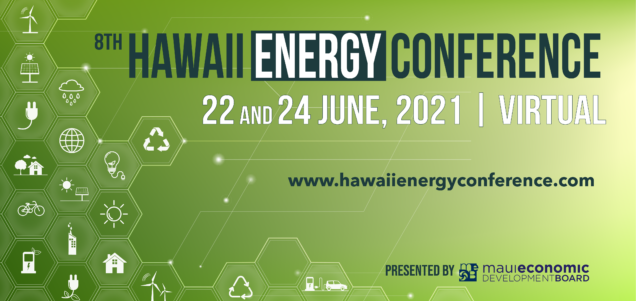


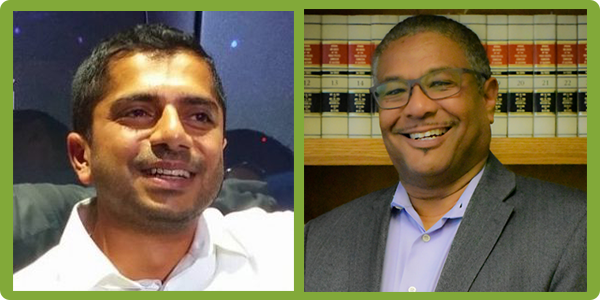

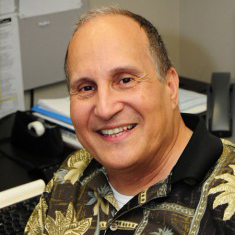
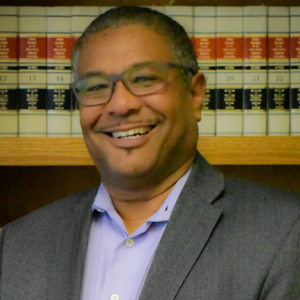
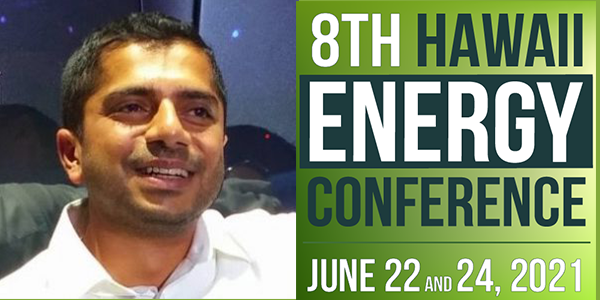
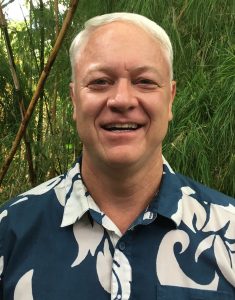
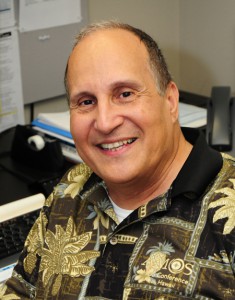
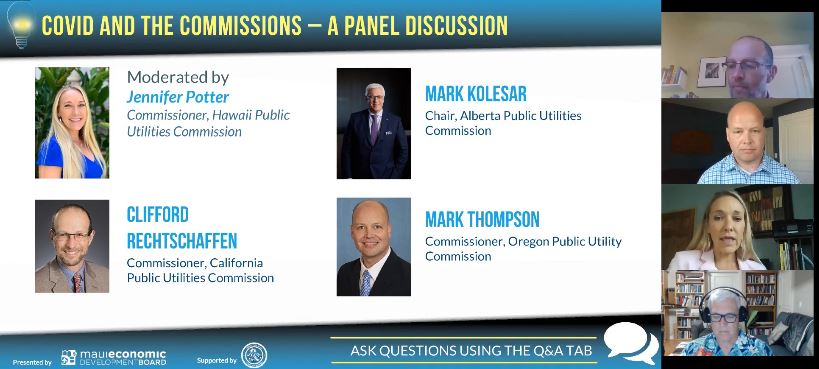
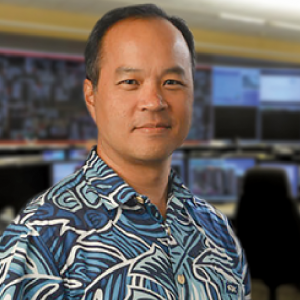
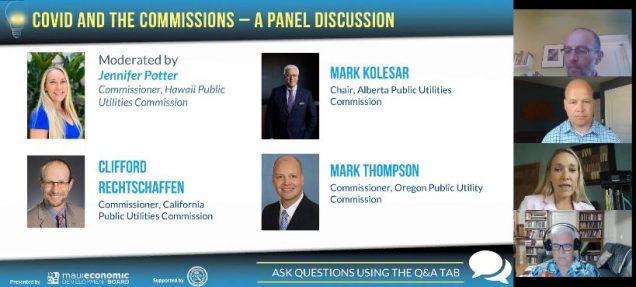 MODERATOR: Jennifer Potter, Commissioner, Hawaii Public Utility Utilities Commission
MODERATOR: Jennifer Potter, Commissioner, Hawaii Public Utility Utilities Commission